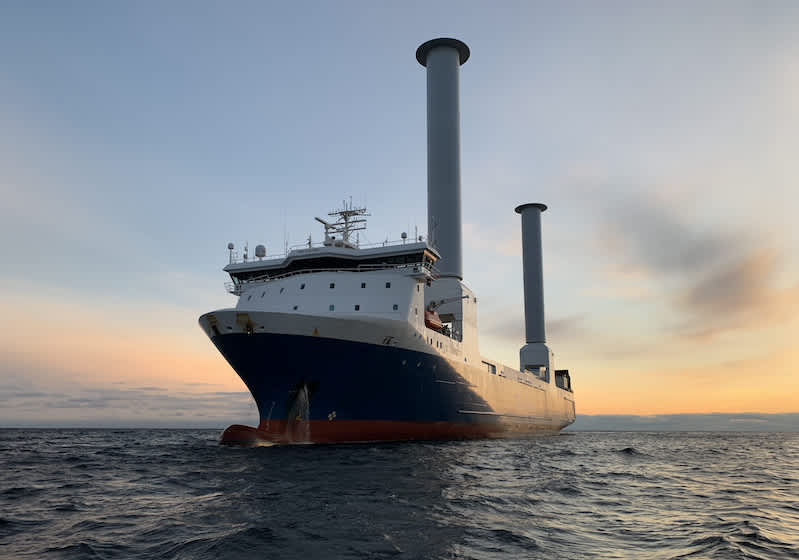There is no doubt that across the industry a significant proportion of the existing global shipping fleet will need to modernise to meet decarbonisation targets. DNV GL estimates that up to 80% of the global trading fleet will have to make technical upgrades to meet the incoming minimum energy efficiency standards within the International Maritime Organization’s (IMO) Energy Efficiency Existing Ship Index (EEXI) and Carbon Intensity Indicator (CII) regulation. This is before considering additional measures such as potential high carbon taxes in European waters.
With significant changes pending, the shipping industry and its financiers need to address how to finance fleet upgrades, particularly the challenging aspects of retrofits, to meet new and future regulatory and ESG-driven standards.
Dollar voting
The emphasis on recalibrating investment portfolios and making lending decisions through an ESG lens has shifted what ‘sustainability’ means to institutional investors. The finance market has transitioned from viewing sustainability as an afterthought to the ability to deliver returns. Instead, it is moving to evaluating the holistic sustainable impact of an organisations’ operations, which has stimulated an appetite for sustainable investments across industries, including shipping.
For example, as the number of Global Maritime Fund’s Poseidon Principles signatories has grown, so has the scale of deal flow. Poseidon signatories issued over $1.2 billion in sustainable maritime ship financing in 2020. Already in the first half of 2021, banks have issued almost $1 billion in Poseidon-linked debt, including new kinds of financial instruments beyond just loans.
The underlying market forces are clear to see. While businesses are aiming to be progressive, the ultimate drivers behind these moves are commercial; charterers are responding to consumer pressure and in turn, financiers need to ensure that their assets don’t become worthless as we move towards a low/zero carbon economy.
A financial catch-22
In terms of wind propulsion, power and fuel savings and emissions reductions on board vessels will enable the ship to achieve great climate alignment compliance scores, specifically for the Poseidon Principles ship finance portfolios and Sea Cargo Charter clauses, while simultaneously providing positive emission ratings to the IMO’s CII. These savings can improve ships’ commercial competitiveness, trade utilisation, and profitability on an annual basis, while also maintaining a fully regulatory compliant, attractive asset value.
So, how do we get these onto more ships? Despite perceptions that the doors of banks are wide open to those with attractive green projects, retrofit finance packages have been few and niche, with a lack of large, mainstream financial institutions under-writing such longer-term investments. Similarly structuring favourable retrofit finance deals that satisfy the interests of lenders, ship owners and charterers has been an ongoing challenge that theoretically can be far more complex than the logistics of an installation itself.
We need to move on from the catch-22 situation; when clean technologies such as Rotor Sails become mainstream technologies in use onboard vessels, financiers will see it as less of a risk especially as the re-sale value of the asset will be clearer to see. But it seems like the only way that these will become the ‘norm’ will be through their incorporation in newbuild fleets. Quite simply, the timings don’t match with these coming on stream and current vessels urgently needing upgrades to meet impending regulation.
A shift in perspective
We need to move beyond looking at retrofits on a vessel-by-vessel basis as financiers need scale and are preferring multi-million fleet-wide, big investments to generate attractive returns. We are also currently seeing an emergence in the popularity of a combination of green loans, sustainability linked loans and corporate finance options, but these are still largely on the periphery and as such, can still be expensive despite preferential rates
In terms of learning from our past, the financial deal structures created for retrofitting scrubbers onto vessels could be called the trailblazers in exploring environmentally-led lending and configuring complex security and payback options. These could be adapted for wind propulsion and other clean technologies as there needs to be more creative ways to share costs, manage investment security and re-balance split incentives.
Charterers are beginning to incentivise the use of clean technology onboard vessels by guaranteeing longer term charter party agreements at attractive rates for owners who invest in preferred clean-tech. Whilst the upfront capital costs are still significant, owners benefit from the assurance that they are locked into contracts to generate reliable revenues to pay back loans.
There are clearly a range of options being worked on, however, common understanding of what finance solutions and deals are in existence and being developed is lacking. Innovation in how deals are being structured and the packages available is welcome, but it must evolve from the fringes and become mainstream and standardised. Shipping needs transparent financial solutions with the scale and standardisation to reflect the demand, and it needs to happen now. Without this we could see a mass shake out of ghost fleets which could have a catastrophic impact shipping companies’ survival and the global supply chains which they serve.
Author: Tuomas Riski


